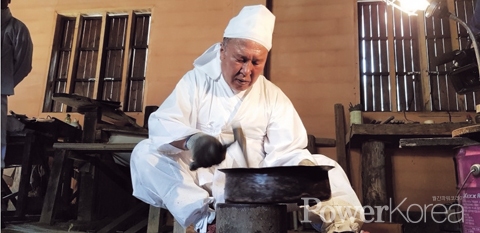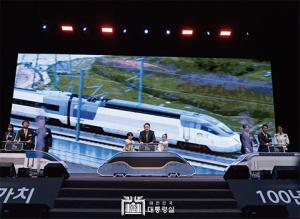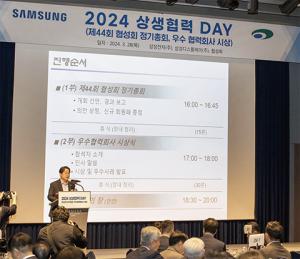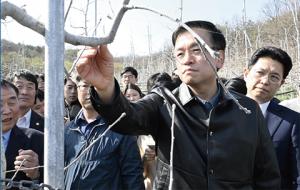 |
||
| ▲ Lee Jum-sik, Head of Hamyang Brass Village | ||
The Korean gongs big or small are good examples of demonstrating the excellence of the Korean brass technique. Talking of the brass or tin bronze technique, we should not miss Hamyang County where more than 30 factories prospered in the past though the number reduced to 10 in late 70s due to the modernization movement that swept the whole nation.
Luckily, the tradition has been passed down through a line of Oh Duck-su (1920-1978) to Lee Yong-gu who opened a brass workshop in Geochang County to Lee Jum-sik (first son of Lee Yong-gu and the head of Hamyang Brass Village).
Lee Yong-gu is No.14 Intangible Cultural Asset in the category of gong making. Lee Jum-sik said "Back then, all brassware were made by hands. But the introduction of machines turned the authenticity of the craft into something mechanic and I and my father and master Lee Bong-jo shut up the trade and went up to Seoul as a result. I learned the handmade technique day and night under strict instructions of my father and the master Lee Bong-jo there."
It has been 40 years Lee has walked this single path and he recently was recognized as an Intangible Cultural Asset of South Gyeongsang Province. He is unique in terms of having the southern style brass technique while other Intangible Cultural Assets in the same field having the northern style.
"To make two gongs by a team of 6, it takes four days. In other words, it really is a hard process. Gongs are made of copper and tin by 78:22 mix. The sound depends on adjusting the thickness according to the different parts; middle thicker, surrounding thinner, and the entrance thicker again to make beautiful sound. But it takes high level of technique to do this properly."
The process of making brass tableware, on the other hand, normally takes 8 steps that accompany thousands of hammerings. "But gongs are the flowers of the art of brass making in which we, the masters, find great pleasure and pride. One might make tin bowls or washbasins but I'm sure they cannot make the gongs with the sound as beautiful as we do. It is regretful that young people today don't want to learn this beautiful technique due to the hardship it involves."
Indeed, the sound of gongs made in Hamyang County is bright, delicate and deep thanks to the masters' endless passion in passing down the tradition and the spirit despite the fact that they have to fight the fire of 1,300°.
김태인 기자 red3955@hanmail.net







